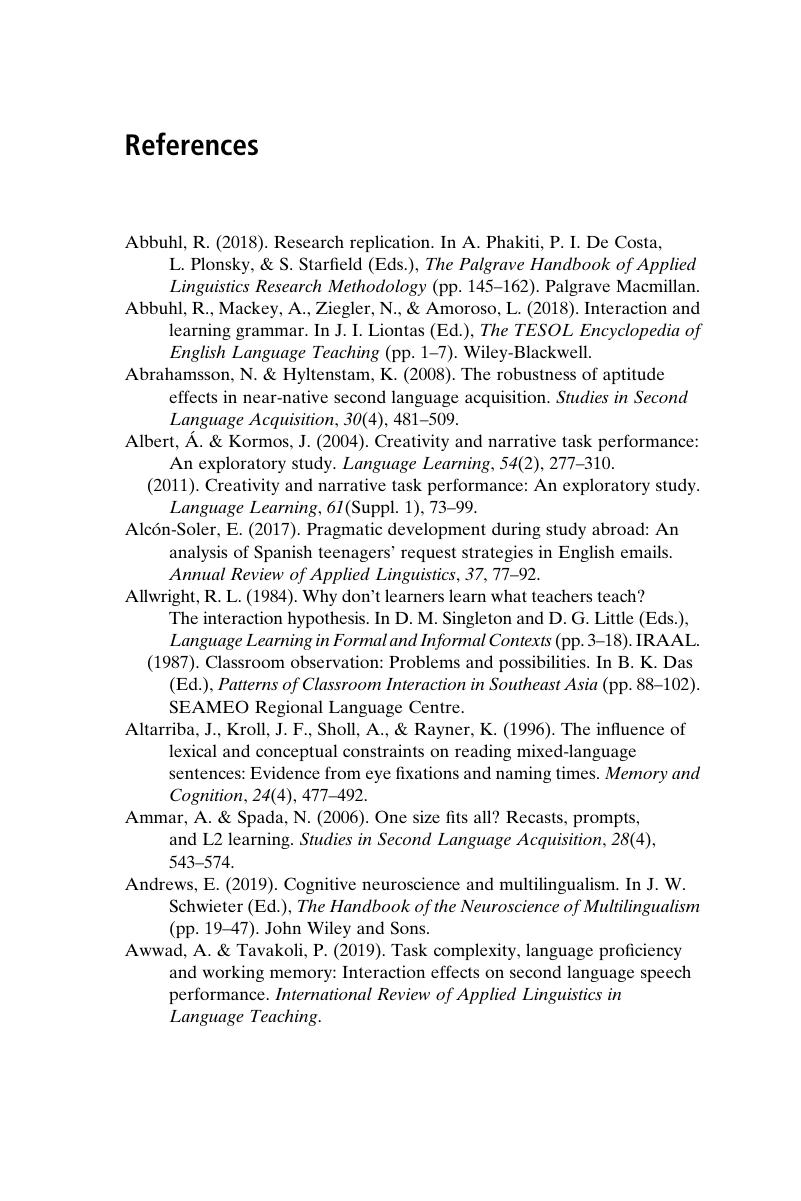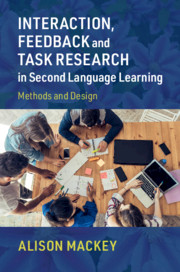Book contents
- Interaction, Feedback and Task Research in Second Language Learning
- Interaction, Feedback and Task Research in Second Language Learning
- Copyright page
- Dedication
- Contents
- Figures
- Tables
- Preface
- Chapter One Theory and Approaches in Research into Interaction, Corrective Feedback, and Tasks in L2 Learning
- Chapter Two Designing Studies of the Roles of Interaction, Feedback, and Tasks in Second Language Learning
- Chapter Three Investigating Individual Differences in Interaction, Feedback, and Task Studies: Aptitude, Working Memory, Cognitive Creativity, and New Findings in L2 Learning
- Chapter Four Collecting Introspective Data in Interaction, Feedback, and Task Research
- Chapter Five Creating and Using Surveys, Interviews, and Mixed Methods for Research into Interaction, Corrective Feedback, Tasks, and L2 Learning
- Chapter Six Doing Meta-Analytic and Synthetic Research on Interaction, Feedback, Tasks, and L2 Learning
- Chapter Seven Investigating Interaction, Feedback, Tasks, and L2 Learning in Instructional Settings
- Chapter Eight Choosing and Using Eye-Tracking, Imaging, and Prompted Production Measures to Investigate Interaction, Feedback, and Tasks in L2 Learning
- Chapter Nine Working with Data in Interaction, Feedback, and Task Research
- Chapter Ten Common Problems, Pitfalls, and How to Address Them in Research on Interaction, Corrective Feedback, and Tasks in L2 Learning
- Glossary
- References
- Index
- References
References
Published online by Cambridge University Press: 03 August 2020
- Interaction, Feedback and Task Research in Second Language Learning
- Interaction, Feedback and Task Research in Second Language Learning
- Copyright page
- Dedication
- Contents
- Figures
- Tables
- Preface
- Chapter One Theory and Approaches in Research into Interaction, Corrective Feedback, and Tasks in L2 Learning
- Chapter Two Designing Studies of the Roles of Interaction, Feedback, and Tasks in Second Language Learning
- Chapter Three Investigating Individual Differences in Interaction, Feedback, and Task Studies: Aptitude, Working Memory, Cognitive Creativity, and New Findings in L2 Learning
- Chapter Four Collecting Introspective Data in Interaction, Feedback, and Task Research
- Chapter Five Creating and Using Surveys, Interviews, and Mixed Methods for Research into Interaction, Corrective Feedback, Tasks, and L2 Learning
- Chapter Six Doing Meta-Analytic and Synthetic Research on Interaction, Feedback, Tasks, and L2 Learning
- Chapter Seven Investigating Interaction, Feedback, Tasks, and L2 Learning in Instructional Settings
- Chapter Eight Choosing and Using Eye-Tracking, Imaging, and Prompted Production Measures to Investigate Interaction, Feedback, and Tasks in L2 Learning
- Chapter Nine Working with Data in Interaction, Feedback, and Task Research
- Chapter Ten Common Problems, Pitfalls, and How to Address Them in Research on Interaction, Corrective Feedback, and Tasks in L2 Learning
- Glossary
- References
- Index
- References
Summary

- Type
- Chapter
- Information
- Interaction, Feedback and Task Research in Second Language LearningMethods and Design, pp. 214 - 239Publisher: Cambridge University PressPrint publication year: 2020



